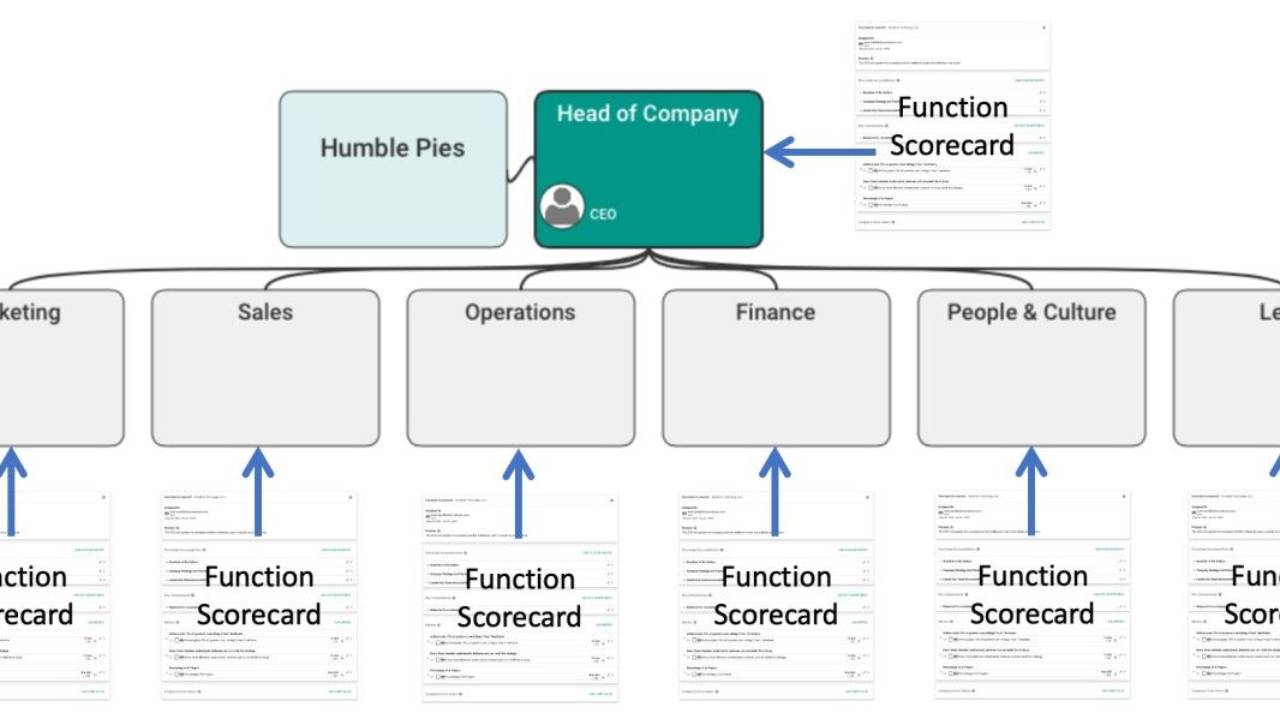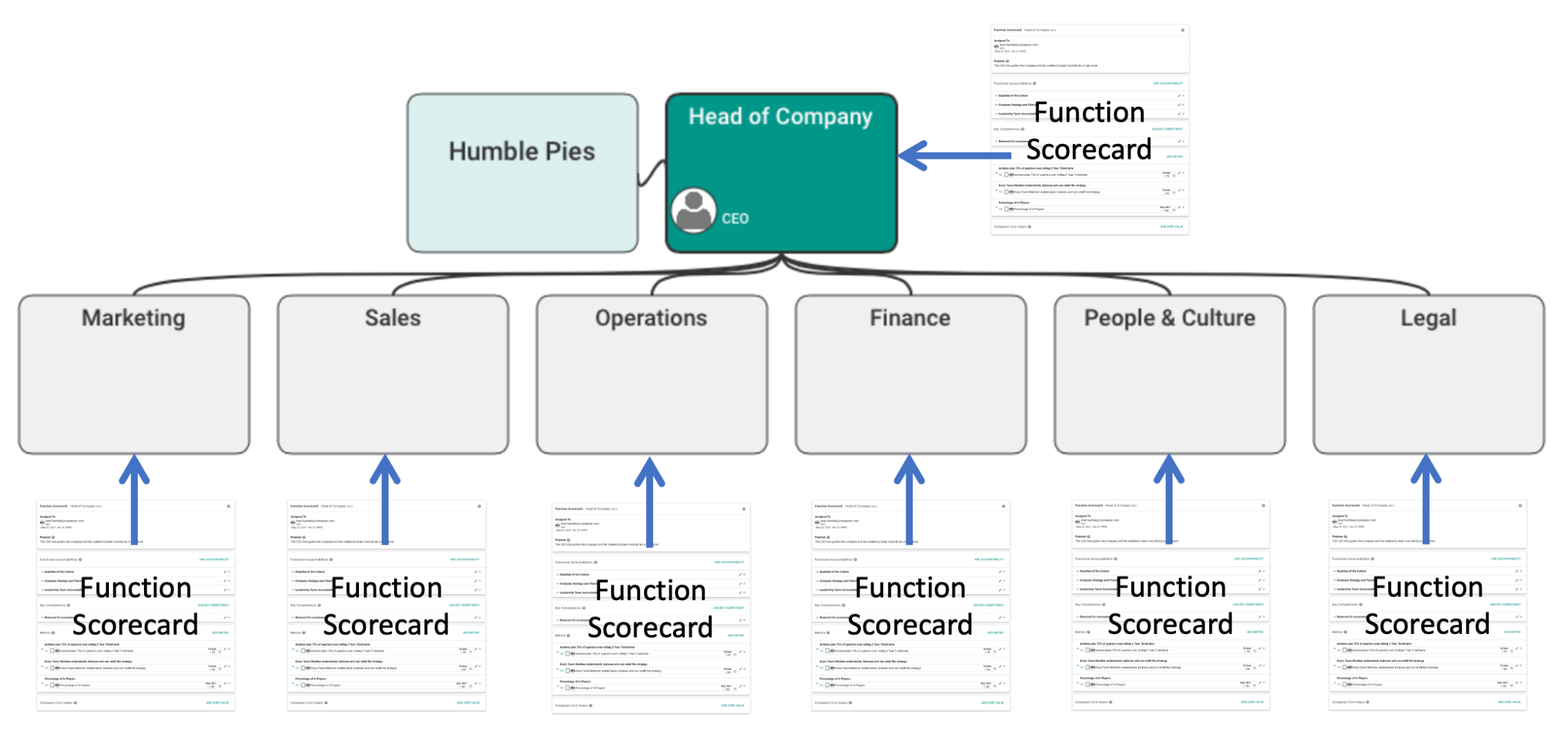Killing Job Descriptions! - By Building Great Function Scorecards
May 29, 2021
I dislike job descriptions even more than I dislike Business Plans. These two documents have caused more problems in business than any others. Business Plans, because they never really map out how a business will grow with any confidence; they are full of false assumptions on “hockey stick” growth and mostly live on a shelf gathering dust from the day they are printed. Job descriptions; because although they might tell you what someone has to do, they rarely encourage accountability by describing the expected outcomes of a role. To me, businesses employ people to achieve outcomes not to list the tasks they must do.
The idea of Job Scorecards was popularized by Brad Smart in his seminal 1999 book “Topgrading”. It was further developed by Geoff Smart in his 2008 book “Who”. Shannon Susko further developed this concept within the “3HAG Way” Strategic Execution system as the Function Scorecard.
Why are function scorecards important?
Well, a great scorecard helps you increase the proportion of A-Players within your team, an A-Player is the top 10% of available people who you could hire at the salary you are prepared to pay. Great scorecards should achieve the following:
- They help attract and retain A-Players by providing clarity of expectations of roles both before and after the hiring process;
- They make the expectations of a function crystal clear and connected to all other key parts of the “3HAG Way” strategic execution system;
- A-Players will drive towards the scorecard goals as they (as A-Players) WANT to be measured;
- They clarify accountability within the functions in an organisation by aligning metrics and priorities to functions;
- They simplify monthly/quarterly reviews as each role has a scorecard with clear metrics and priorities;
- They connect the players and the individual outcomes to the team overall score and success (The KFFM).
What is a Function Scorecard?
A Function Scorecard is a short document that captures the key things that together describe the outcomes and the expectations of the function. A scorecard normally includes:
- The function title
- The name of the person who owns (is accountable for) the function,
- Who they report to and who reports to them;
- The purpose of the function (the Goal of the Role),
- The functional accountabilities of the job
- The key competencies needed to fulfil that functional role successfully
- The metrics that measure the success of the outcomes of the job (fiscal and non-fiscal);
- The priorities that are connected to this function (via an accountable team member);
- The organisation’s Core Values.
Here is an example of a scorecard maintained in our Metronome Growth Systems software:

So how do you build a great Function Scorecard?
One thing I want to stress is that the Scorecard applies to the Function and not to the person who is in the role. A person agrees to own or be accountable for the function. This is important as this aligns with the functional organisational view that we build when we map out the key functions in an organisation, it is a functional view not an organisational view.
Implementing Job Scorecards can be quite intimidating when you first start the process. I have found two things make a huge difference. Firstly, always start with the Head of the Company, then move to the leadership team and then cascade down to the remaining members in the business. Secondly, don’t rush the process as if you try to move too fast you risk getting people offside and you have to start again.
Starting at the top, work with the CEO to define their scorecard. Often in smaller companies the CEO fulfils more than one functional role so the CEO may have more than one scorecard. That is OK, as the company grows, the CEO will then be able to delegate one or more of those functional roles to others in the business as the leadership team develops and grows.
Once the CEO’s function scorecard(s) are in place, work on developing the scorecards for the leadership team. If you have worked through functional accountability and the Key Function Flow Map, then this should be a simple process. Accountabilities and metrics are already defined and allocated so there is not too much left to fill in.
Continue cascading scorecards until everyone in the organisation has a scorecard. This seems like a lot of work but it shouldn’t be if you are clear on your accountabilities and you have developed your Key Function Flow Maps down to level 2 and level 3.
Scorecards connect with all parts of the Strategic Execution System
Job Scorecards connect tightly with all other parts of the 3HAG Way Strategic Execution system. If you look at the Key Function Flow Map (KFFM) you will see that it is composed of functions each of which has metrics. Function Scorecards document the expectations of these functions and the metrics that measure how well the functions are operating and how it is contributing to the success of the business. So the metrics in a function scorecard cascade down to the function scorecards of each team member in the next level of the function.

Getting the metrics right is important as we want them to drive the behaviour change we need to be able to achieve our 3HAG. Over time, this will develop the leadership team into Level 5 Leaders (Jim Collins, Good to Great).
They also connect in with the annual and quarterly priorities via the accountable team member as these normally relate to a specific function.

Similarly, as we build out the functional organisation of the business we can see that each function has a scorecard. In the diagram we have only gone to the Head of the Company and the top level functions but we can and should cascade this down through the organisation as soon as the organisation is ready.

The regular daily, weekly, monthly & quarterly meeting rhythms provide a forum to both replay and review the status of the scorecards through the reviews of the metrics and priorities; they essentially provide a forum for regular reviews of the expectations of each of the functions in a business.
Scorecards also simplify regular team reviews, once you have your scorecards in place you have the structure and the content of your regular monthly and/or quarterly individual reviews from top to bottom in the business. Let’s face it, if it isn’t on your scorecard, there really shouldn’t be any need to discuss or review it.
The Scorecard is YOUR Scoreboard
If the Key Function Flow Map is the Company’s Scoreboard, your function scorecard is YOUR SCOREBOARD. It is the place that keeps your score on what you are doing to improve your business (your priorities) and how you are doing in the functioning of your business (your metrics).
Within the 3HAG Way coaching community, we generally see that those businesses that are clear on their accountabilities and their metrics (KFFM) AND have their meeting rhythms in place AND have their scorecards in place are the ones that are growing the fastest. It makes sense, be clear on who is accountable for what, measure the operations of the accountabilities and provide a mechanism to keep the score at an individual and organisational level.
Need help getting your scorecards in place, give me a call on +61 415 534239 or mail me at ged@crystalyzer.com
I'd like to thank my peer coach Damian Byrne for reviewing this article before it was published and also to Elizabeth Crook for the use of the term "Goal of the Role" in the "What is a Function Scorecard" section.
Next Article - How do Scorecards drive Organisational Behaviour Change?

